Activated Carbon Fiber (ACF), Granular Activated Carbon (GAC) and Powdered Carbon (PAC) are basically carbon materials with massive open pores, but there are differences in the structure of the pores and amount of radicals.
The distribution of the pore diameters in ACF concentrate under 20 angstroms with surface area ranging from 1000 m2/g to 1500 m2/g. Whereas the pore diameters in GAC and PAC could distribute from 20 to several hundred angstroms. And their surface areas are only about 800 m2/g to 1000 m2/g. VAN DER WAALS interactions are the major source of adsorption. However, due to its long and slit pore structure, ACF has the capillary attraction that does not exists in GAC and PAC hence performs much faster adsorption than GAC and PAC by several hundred times. With only a few exceptions in hi-tech areas, ACF has not been adopted as prevailing as GAC and PAC in the industries owing to its high cost. In fact, by putting together all of the advantages of ACF with regard to its fast adsorption/desorption speed, decomposition temperature as high as 500 degree centigrade, less land-occupation, easy handling and remarkable regeneration frequency, the integral economic efficiency of ACF is actually much higher than that of GAC and PAC.
a. The pore structure of Activated Carbon Fiber (ACF) and Granular Activated Carbon (GAC)
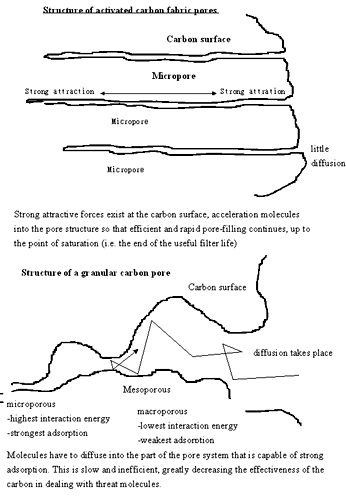
b. The interaction energy on the surface of activated carbon
(a) the mutual attraction energy at a single carbon surface can only reach out very little beyond the surface and the adsorption power is nothing significant.
(b) wider pores can be taken as the result of partial overlapping of two single carbons drawn by the attraction power. The attraction power then multiplies due to the accumulation of energy.
(c) when two pores are coming to perfect overlapping at a narrow hole, the maximum energy of two pores are then added together resulting in the significantly increase of the attraction power.
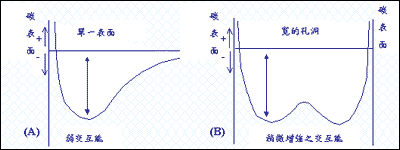
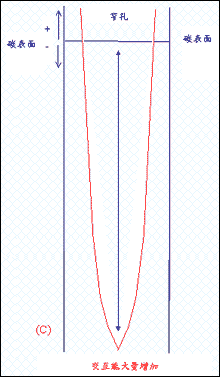
c. Comparison of pores distribution between ACF and GAC
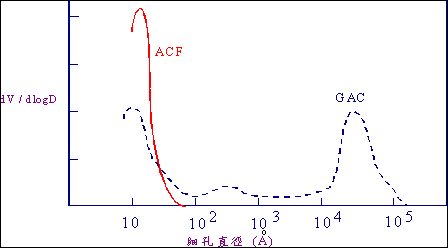
A majority of pore distribution in ACF is micropores which are of much less Diameter and more concentration
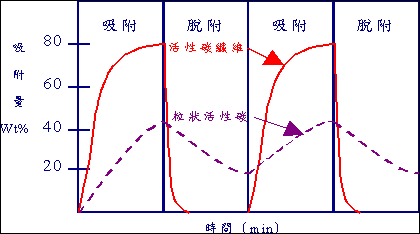
A Comparison of pores distribution between ACF and GAC
For information about activated carbon reticulated filter foam products, please visit:
http://www.spongesupplier.com/product-category/filter-sponge/activated-carbon-filter-foam/











